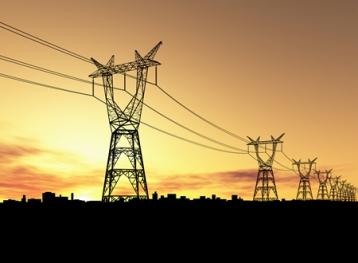How electricity flows from power station generators to the grid
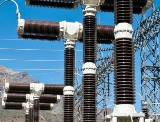 Electric power plant generators generate electrical energy voltage 6.3-36.75 kV (depending on the type of generators). The transmission of electricity in the power system over long distances in order to reduce losses and capital costs for the construction of electrical networks is carried out at increased voltage, therefore, the electrical energy generated by the generators of power plants, before being transferred to the power system, rises to voltage 110-750 kV.
Electric power plant generators generate electrical energy voltage 6.3-36.75 kV (depending on the type of generators). The transmission of electricity in the power system over long distances in order to reduce losses and capital costs for the construction of electrical networks is carried out at increased voltage, therefore, the electrical energy generated by the generators of power plants, before being transferred to the power system, rises to voltage 110-750 kV.
The electric power system, in particular the distribution networks, is built in such a way that the maximum power of the generators of power plants corresponds to the carrying capacity of the electric networks of the section of the electric power system and, no less important, that it fully meets the needs of consumers, including in case of disconnection of one or another generator from the electrical network.
The magnitude of the voltage of the main lines, through which it is planned to transfer the electricity generated by the generators to the power system, depends on the size of the power plant - the number and power of the generators. If it is a large nuclear power plant (NPP) that gives several GW of electrical energy to the system, then it is advisable to connect it to the backbone lines with a voltage of 750 kV, which are capable of carrying a load of tens of GW.
Thermal power plants (CHP, CHP) and smaller in terms of the amount of electricity supplied hydroelectric power plants (HPP) connected to the power system with lines with a voltage of 110, 220, 330 or 500 kV, depending on the power of these power plants.
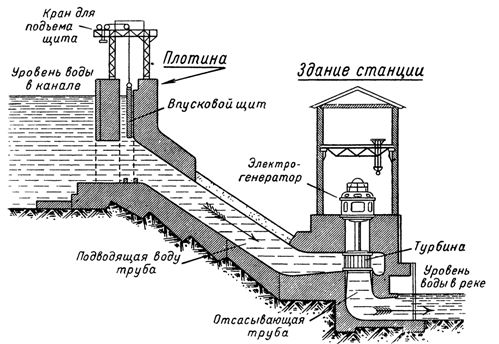
Hydroelectric plant device
Conversion of electrical energy generated by generators in power plants into the required voltage value for further transmission of electricity to consumers carried out at reinforcing substations.
Step-up transformers or autotransformers are installed at these substations, which, in the substation switchgear, transmit electricity directly to consumer distribution substations or to the power system on high-voltage lines.
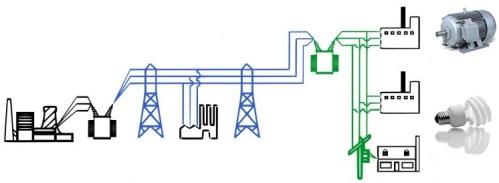
Features of switching on and off generators from the power system
An energy system is a complex system in which all nodes are connected to each other, in which a balance is maintained between what is produced in power plants and what is consumed consumers of electrical energy… Shutting down a generator in a power plant can cause this balance to be disturbed in a certain section of the power system.
If in a given section of the electricity system there is no possibility to cover the shortage of electricity, this may lead to an interruption of the electricity supply to consumers. Therefore, all planned work, providing for the disconnection and inclusion of generators of power plants in the network, must be carried out taking into account the peculiarities and mode of operation of the power system as a whole and its individual sections.
When considering the modes of operation, the main task is to ensure maximum reliability of the power supply to users, taking into account possible emergency situations.
An exception is emergency shutdowns of power plant generators. As mentioned above, the power system is built in such a way that in case of disconnection of the generator from the power grid, it is possible to cover the resulting shortage of electricity by increasing the amount of generated energy in other power plants.
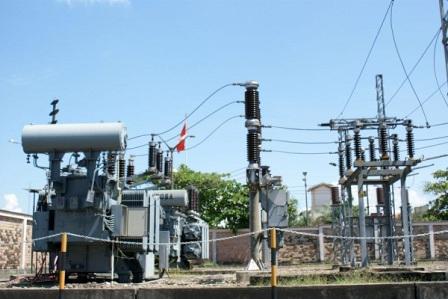
The characteristics of the inclusion of electrical generators in the network should also be noted. Before switching on the generator for parallel operation with the power system, it must be pre-synchronized with this power system. The process of synchronizing the generator with the system consists in achieving equality of frequency and voltage, as well as in phase matching of the voltage vectors of the generator and the electrical network.
In power plants, the process of synchronization and further control over the mode of operation of the generators is carried out with the help of complex devices that work mainly in automatic mode.
The inclusion of generators that were not previously synchronized with it leads to emergency situations, the scale of which is directly proportional to the power of the generators connected to the grid.
Regulation of the voltage supplied by the generators to the network is carried out using automatic excitation control devices (ARV). The voltage regulation range of the generator using ARV devices is small. If necessary, additional voltage regulation is carried out by changing the transformation ratios — with the help off-circuit tap changers and on-load switching devicesbuilt into transformers (autotransformers) of distribution substations.

